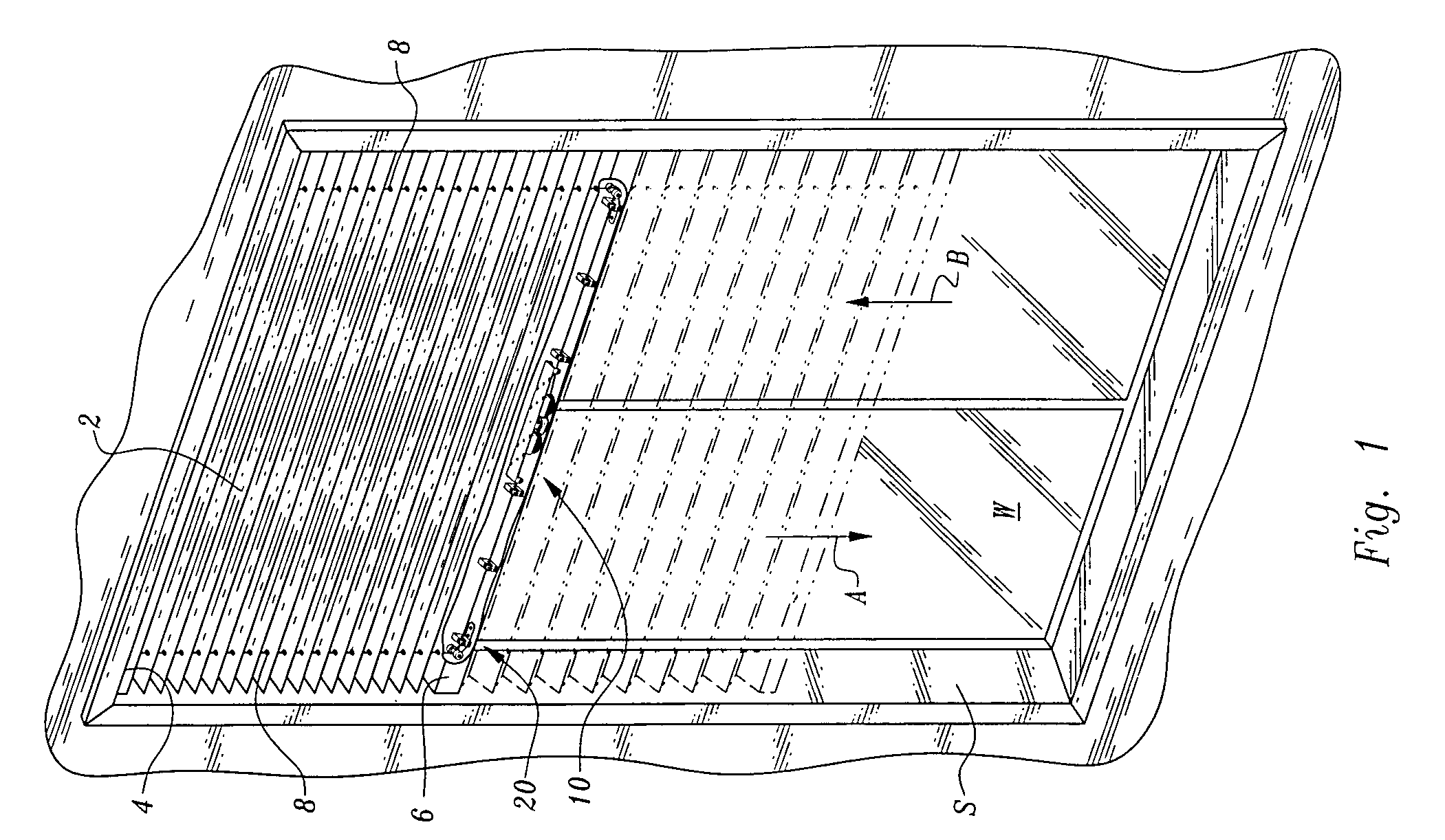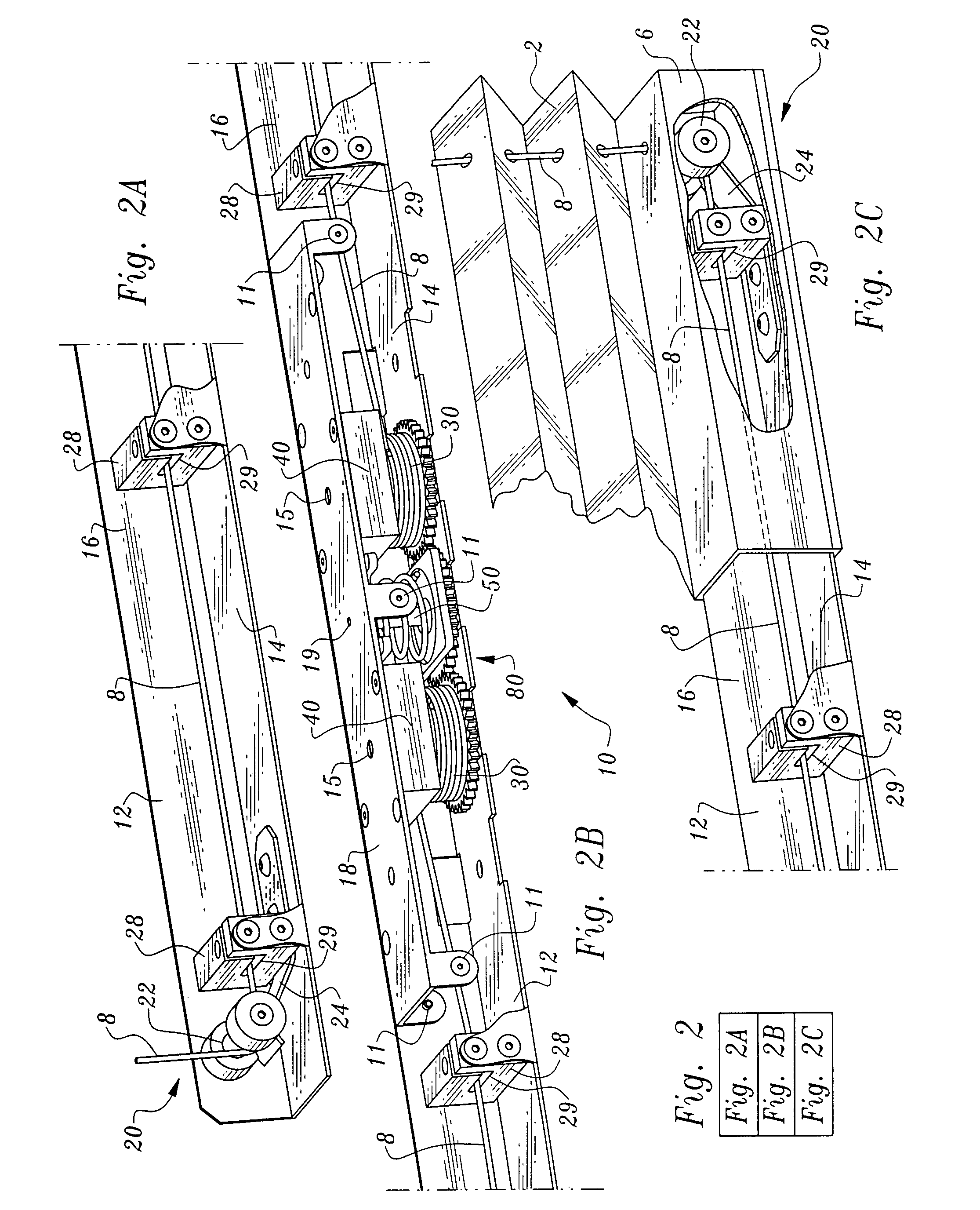Progressive resistance lifting mechanism for a window covering
a technology of progressive resistance and lifting mechanism, which is applied in the direction of door/window protective device, construction, building components, etc., can solve the problems of insufficient satisfaction of external cord window covering adjustment mechanism, inability to adjust the position of external cord window covering, and cords presenting safety hazards for infants and toddlers, etc., to achieve convenient positioning, reliable performance, and easy cutting to different widths
- Summary
- Abstract
- Description
- Claims
- Application Information
AI Technical Summary
Benefits of technology
Problems solved by technology
Method used
Image
Examples
Embodiment Construction
[0038]Referring to the drawings, wherein like reference numerals represent like parts throughout the various drawing figures, reference numeral 10 (FIGS. 1 and 6) is directed to a lifting mechanism for a window covering 2. The window covering 2 generally includes a top rail 4 parallel with and spaced from a bottom rail 6 with the window covering 2 structure extending between the top rail 4 and bottom rail 6. Cords 8 extend between the top rail 4 and the bottom rail 6. The lifting mechanism 10 acts upon the cords 8 within one of the rails 4, 6 so that the bottom rail 6 can maintain equilibrium wherever the bottom rail 6 is positioned by a user. In this way, a user can raise the bottom rail 6 (arrow B) or lower the bottom rail 6 (arrow A) to occlude the window W or expose the window W, with the bottom rail 6 conveniently remaining where it is left by the user.
[0039]In essence, and with particular reference to FIGS. 1, 3 and 6, basic details of the lifting mechanism 10 are described. T...
PUM
 Login to View More
Login to View More Abstract
Description
Claims
Application Information
 Login to View More
Login to View More - R&D
- Intellectual Property
- Life Sciences
- Materials
- Tech Scout
- Unparalleled Data Quality
- Higher Quality Content
- 60% Fewer Hallucinations
Browse by: Latest US Patents, China's latest patents, Technical Efficacy Thesaurus, Application Domain, Technology Topic, Popular Technical Reports.
© 2025 PatSnap. All rights reserved.Legal|Privacy policy|Modern Slavery Act Transparency Statement|Sitemap|About US| Contact US: help@patsnap.com



